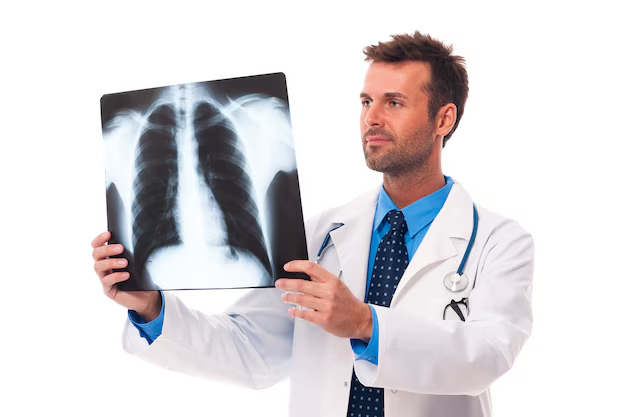Rigid Bronchoscopy
Rigid bronchoscopy is an advanced diagnostic and therapeutic procedure used to examine the larger airways in the lungs. Unlike flexible bronchoscopy, this technique utilizes a rigid metal tube and is performed under general anesthesia. It is highly effective for managing complex airway conditions such as large tumors, foreign body removal, massive bleeding, airway stenting, and central airway obstruction.
Bronchoscopy involves placing a thin tube-like instrument called a bronchoscope through the nose or mouth and down into the airways of the lungs. The tube has a mini-camera at its tip, and is able to carry pictures back to a video screen or camera. Using a bronchoscope, the doctor is able to see the interior of the airway and any abnormality associated with it and decide upon the type of sample to be taken.
Possible Risks and Complications
Every effort will be made to conduct the procedure in such a way as to minimize discomfort and risks. However, like other procedures, there are inherent potential risks. The incidence of major complications associated with bronchoscopy is between 0.8% - 1.3%.
Complications include: accumulation of air in pleural space, hemorrhage, subcutaneous emphysema, postoperative fever, chest infection, cardiac arrhythmias, hypoxemia, vasovagal attack, myocardial infarction, pulmonary oedema, bronchospasm, choking, perforation of airway, tracheo-esophageal fistula. The mortality rate associated with bronchoscopy is <0.01%.
Post Procedure Course
- Postoperative oxygen supplementation may be required in some patients, especially those with impaired lung function or who were sedated.
- A chest radiograph is carried out post-procedure (where indicated).
- Patients who have had transbronchial biopsies should observe for chest pain, breathlessness, haemoptysis, surgical emphysema, or excessive cough — which may indicate pneumothorax — and contact emergency services if needed.
- Sedated patients are advised not to drive, sign legal documents, or operate machinery for 24 hours after the procedure.
- Day-case sedated patients should be accompanied home. Higher-risk individuals, such as elderly patients or those undergoing transbronchial biopsy, should have someone stay with them overnight.
Dr. Manoj Kumar Goel is highly skilled in rigid bronchoscopy and uses this technique for both emergency and elective airway interventions. The procedure allows for better control of the airway and ventilation during complex cases and enables the use of larger instruments for biopsies and therapeutic interventions.
Rigid bronchoscopy plays a crucial role in interventional pulmonology and is especially useful when flexible bronchoscopy is inadequate. It is a safe and essential tool in experienced hands and provides life-saving outcomes in many critical airway disorders. At Dr. Goel’s center, state-of-the-art equipment and patient safety protocols ensure optimal outcomes for every case.



